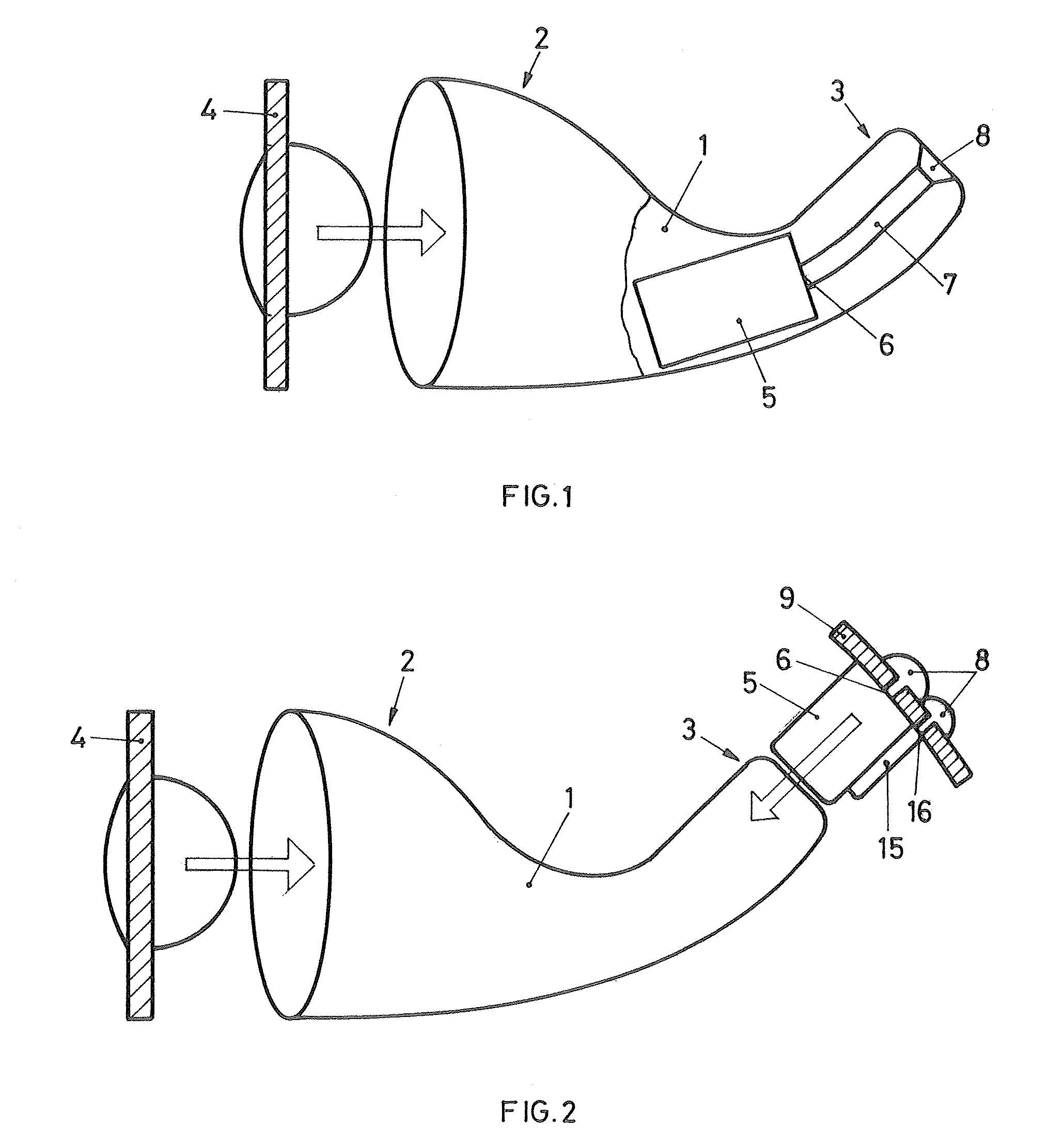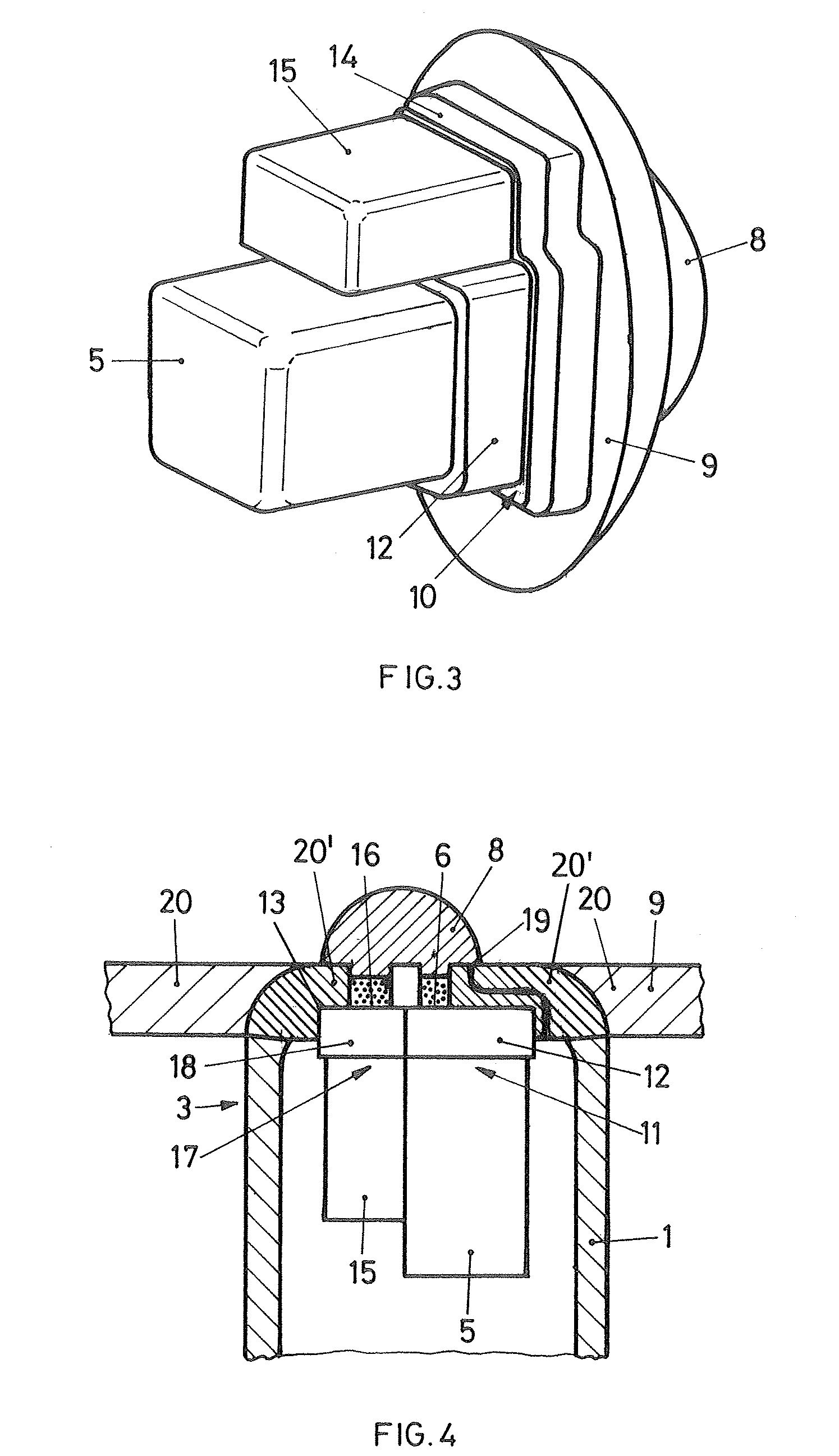Tip-plate assembly, hearing device with a tip-plate assembly and method of manufacturing a hearing device with a tip-plate assembly
a technology of tip-plate assembly and hearing device, which is applied in the field of hearing devices, can solve the problems of limiting the possible insertion depth of the hearing device into the ear canal, acute lack of space within the shell to position the necessary components, and the tetrahedron type hearing device, so as to reduce the time required for the mounting of the receiver module into the shell during product assembly, reduce the acoustic propagation delay from the receiver sound output port to the ear canal microphone inpu
- Summary
- Abstract
- Description
- Claims
- Application Information
AI Technical Summary
Benefits of technology
Problems solved by technology
Method used
Image
Examples
Embodiment Construction
[0047]FIG. 1 shows in a schematic representation a state of the art in-the-ear type hearing device comprising a shell 1 and a face-plate 4 to be attached to the distal end 2 of the shell 1. The shell 1 houses a receiver module 5 along with further components such as for instance a battery and electronic circuitry for audio signal processing and amplification. The sound output port 6 of the receiver module 5 is connected to a sound opening at the proximal end 3 of the shell 1 via an acoustic tube 7. The proximal sound opening is covered by a wax protection member 8 (also referred to as wax guard), which helps to avoid soiling of the receiver and the acoustic tube 7 by ear wax, sweat, etc. The receiver module 5 is conventionally inserted into the shell 1 through an opening at the distal end 2 of the shell 1. The final position of the receiver module 5 within the shell 1 is determined by the individual shape of the shell 1 and the positioning of the remaining components within the shel...
PUM
| Property | Measurement | Unit |
|---|---|---|
| colour | aaaaa | aaaaa |
| shape | aaaaa | aaaaa |
| size | aaaaa | aaaaa |
Abstract
Description
Claims
Application Information
 Login to View More
Login to View More - R&D
- Intellectual Property
- Life Sciences
- Materials
- Tech Scout
- Unparalleled Data Quality
- Higher Quality Content
- 60% Fewer Hallucinations
Browse by: Latest US Patents, China's latest patents, Technical Efficacy Thesaurus, Application Domain, Technology Topic, Popular Technical Reports.
© 2025 PatSnap. All rights reserved.Legal|Privacy policy|Modern Slavery Act Transparency Statement|Sitemap|About US| Contact US: help@patsnap.com



